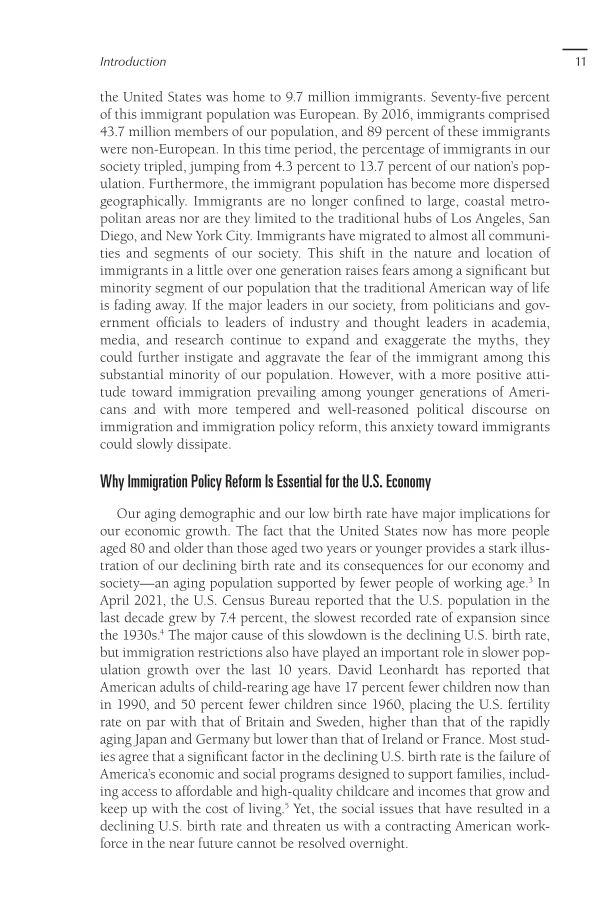Introduction 11 the United States was home to 9.7 million immigrants. Seventy-five percent of this immigrant population was European. By 2016, immigrants comprised 43.7 million members of our population, and 89 percent of these immigrants were non-European. In this time period, the percentage of immigrants in our society tripled, jumping from 4.3 percent to 13.7 percent of our nation’s pop- ulation. Furthermore, the immigrant population has become more dispersed geographically. Immigrants are no longer confined to large, coastal metro- politan areas nor are they limited to the traditional hubs of Los Angeles, San Diego, and New York City. Immigrants have migrated to almost all communi- ties and segments of our society. This shift in the nature and location of immigrants in a little over one generation raises fears among a significant but minority segment of our population that the traditional American way of life is fading away. If the major leaders in our society, from politicians and gov- ernment officials to leaders of industry and thought leaders in academia, media, and research continue to expand and exaggerate the myths, they could further instigate and aggravate the fear of the immigrant among this substantial minority of our population. However, with a more positive atti- tude toward immigration prevailing among younger generations of Ameri- cans and with more tempered and well-reasoned political discourse on immigration and immigration policy reform, this anxiety toward immigrants could slowly dissipate. Why Immigration Policy Reform Is Essential for the U.S. Economy Our aging demographic and our low birth rate have major implications for our economic growth. The fact that the United States now has more people aged 80 and older than those aged two years or younger provides a stark illus- tration of our declining birth rate and its consequences for our economy and society—an aging population supported by fewer people of working age.3 In April 2021, the U.S. Census Bureau reported that the U.S. population in the last decade grew by 7.4 percent, the slowest recorded rate of expansion since the 1930s.4 The major cause of this slowdown is the declining U.S. birth rate, but immigration restrictions also have played an important role in slower pop- ulation growth over the last 10 years. David Leonhardt has reported that American adults of child-rearing age have 17 percent fewer children now than in 1990, and 50 percent fewer children since 1960, placing the U.S. fertility rate on par with that of Britain and Sweden, higher than that of the rapidly aging Japan and Germany but lower than that of Ireland or France. Most stud- ies agree that a significant factor in the declining U.S. birth rate is the failure of America’s economic and social programs designed to support families, includ- ing access to affordable and high-quality childcare and incomes that grow and keep up with the cost of living.5 Yet, the social issues that have resulted in a declining U.S. birth rate and threaten us with a contracting American work- force in the near future cannot be resolved overnight.
Document Details My Account Print multiple pages
Print
You have printed 0 times in the last 24 hours.
Your print count will reset on at .
You may print 0 more time(s) before then.
You may print a maximum of 0 pages at a time.













































































































































































































































































































































































